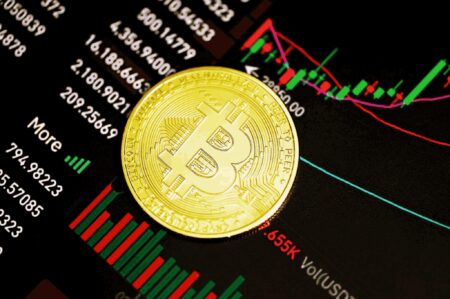Cryptocurrency Market Volatility Amid US Tariffs: Navigating Uncertainty
As the U.S. gears up to introduce a set of new tariffs aimed primarily at trade partners like China, Japan, and South Korea, the cryptocurrency market is experiencing heightened volatility. Events surrounding these tariffs—dubbed “Liberation Day” by President Trump—have significant implications for digital assets, raising worries about their future in a climate of uncertainty. With a joint response from these crucial trading partners, the effects on the cryptocurrency landscape may be profound, as market participants reassess their strategies and risk profiles.
The upcoming U.S. tariffs, set to be imposed in early April, target vital industries, including automotive and pharmaceuticals. In light of these tensions, China, Japan, and South Korea have signaled significant cooperation to mitigate negative outcomes from these U.S. policies. This collaborative approach indicates a strategic alliance aiming to protect their economic strengths and maintain competitive advantages. Such developments sparks concerns about a potential trade war’s effect on financial markets, especially the increasingly interconnected crypto market, where price fluctuations arise from global economic cues.
As anxiety mounts in the overall market, Bitcoin has already shown signs of decline. As of March 31, it was trading around $82,687, having slipped nearly 2% within the preceding 24 hours. This bearish trend persists as Bitcoin struggles to maintain upward momentum, with global economic news further fueling uncertainty. Leading up to the anticipated tariffs, traders and investors remain wary, leading to a cautious approach as they prepare for market fluctuations that could significantly impact Bitcoin and other digital currencies.
Despite this prevailing bearish sentiment, institutional interest in Bitcoin appears robust. Analysis from Glassnode reveals a growing number of addresses held by investors with significant Bitcoin holdings (between 1,000 and 10,000 BTC). This suggests that, while short-term challenges remain, long-term holders maintain confidence in Bitcoin’s future value. The crypto market’s Fear & Greed Index measures the current fear at 34, indicating traders are apprehensive about long-term ramifications stemming from the tariffs, yet institutional inflows into Bitcoin exchange-traded funds (ETFs) demonstrate ongoing demand.
Bitcoin is currently situated around a critical price point where support and resistance levels are crucial for potential recovery. With immediate resistance identified at the $85,000 mark, analysts suggest that breaking this barrier could trigger a positive turnaround for Bitcoin. However, if global trade tensions escalate resulting in economic instability, a further decline could test support levels around $70,000 and potentially lower. Market indicators in the coming days will determine if Bitcoin can recover or will continue in a downward spiral.
In summary, the intersection of global trade tensions and the cryptocurrency market presents both challenges and opportunities for investors. As the U.S. rolls out new tariffs, the reaction from key global players necessitates careful watching, particularly with Bitcoin’s performance under scrutiny. While institutional demand remains resilient, short-term price fluctuations are anticipated as the market navigates this precarious landscape. Key support and resistance levels will be instrumental in guiding traders’ strategies moving forward as they brace for the potential impacts of new tariffs on the broader cryptocurrency sphere.
Conclusion
As we approach the implementation of these tariffs, both traders and investors in the cryptocurrency market should remain vigilant and be prepared for increased volatility. Monitoring market trends, understanding global economic shifts, and staying informed about institutional movements will be pivotal in making informed decisions during these uncertain times. While Bitcoin’s long-term outlook may be buoyed by sustained institutional interest, the short-term climate remains fraught with challenges that could impact its price trajectory in the days and weeks to come.
















